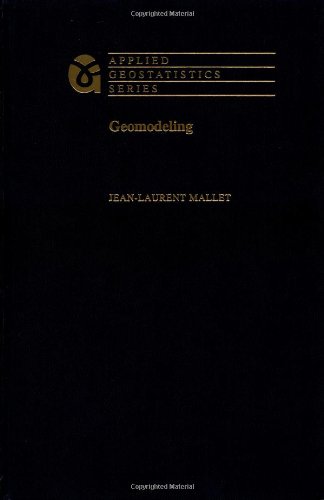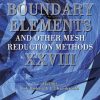(Ebook PDF) Geomodeling Applied Geostatistics Series 1st Edition by Jean Laurent Mallet ISBN 9780198033035 0198033036 full chapters
$50.00 Original price was: $50.00.$35.00Current price is: $35.00.
Geomodeling Applied Geostatistics Series 1st Edition Jean-Laurent Mallet Digital Instant Download
Author(s): Jean-Laurent Mallet
ISBN(s): 0195144600
Edition: 1
File Details: PDF, 33.72 MB
Year: 2002
Language: english
(Ebook PDF) Geomodeling Applied Geostatistics Series 1st Edition by Jean Laurent Mallet -Ebook PDF Instant Download/Delivery:9780198033035, 0198033036
Instant download Full Chapter of Geomodeling Applied Geostatistics Series 1st Edition after payment

Product details:
ISBN 10:0198033036
ISBN 13:9780198033035
Author: Jean Laurent Mallet
Geomodeling applies mathematical methods to the unified modeling of the topology, geometry, and physical properties of geological objects. The methodology (gOcad, computer assisted design of geological data) is general, but in this book the author presents a new interpolation method for modeling natural objects that allows application of a wide range of complex data. The audience for the book will be graduate students and practitioners in the earth and environmental sciences.
Table of Contents:
- 1 Discrete Modeling for Natural Objects
- 1.1 Introduction
- 1.2 Discrete modeling
- 1.3 Interpolation
- 1.4 Examples of applications
- 1.5 Conclusions
- 2 Cellular Partitions
- 2.1 Introduction
- 2.2 Elements of topology
- 2.3 Cellular partition of an n-manifold object
- 2.4 Generalized Maps
- 2.5 Implementing GMap-based models
- 2.6 Conclusions
- 3 Tessellations
- 3.1 Introduction
- 3.2 Delaunay’s tessellation
- 3.3 Non-Delaunay triangulated surfaces
- 3.4 Notion of a regular n-grid
- 3.5 Notion of an irregular n-grid
- 3.6 Implicit surfaces
- 3.7 Conclusions
- 4 Discrete Smooth Interpolation
- 4.1 Introduction
- 4.2 The DSI problem
- 4.3 Uniqueness of the DSI solution
- 4.4 The local DSI equation
- 4.5 Accounting for hard constraints
- 4.6 Accelerating the convergence
- 4.7 The fuzzy Control-Point paradigm
- 4.8 The fuzzy Control-Node paradigm
- 4.9 From a discrete to a continuous model
- 4.10 Conclusions
- 5 Elements of Differential Geometry
- 5.1 Parametric curves
- 5.2 Parametric surfaces
- 5.3 Curvature of curves drawn on a surface
- 5.4 Miscellaneous
- 5.5 Discrete modeling
- 5.6 Examples of applications to geology
- 5.7 Conclusions
- 6 Piecewise Linear Triangulated Surfaces
- 6.1 Introduction
- 6.2 Basic DSI constraints
- 6.3 Modeling a faulted surface
- 6.4 Continuity through faults
- 6.5 Global parameterization
- 6.6 Modifying the topology
- 6.7 Conclusions
- 7 Curvilinear Triangulated Surfaces
- 7.1 Introduction
- 7.2 Building a smooth curvilinear triangle
- 7.3 Gregory G[sup(1)] patchwork
- 7.4 Recursive subdivisions
- 7.5 Conclusions
- 8 Elements of Structural Geology
- 8.1 Geometry of faults and horizons
- 8.2 Modeling stratified media
- 8.3 Merging seismic data with well data
- 8.4 Deformation analysis
- 8.5 Unfolding a horizon
- 8.6 Unfolding a stack of layers
- 8.7 Conclusions
- 9 Stochastic Modeling
- 9.1 Simulation versus interpolation
- 9.2 Probabilities in a nutshell
- 9.3 Random Functions
- 9.4 Random Fourier Series
- 9.5 Uniform Random Functions and P-fields
- 9.6 Stochastic simulators
- 9.7 Kriging-based methods
- 9.8 Blending-based method
- 9.9 Assessing geometric uncertainties
- 9.10 Conclusions
- 10 Discrete Smooth Partition
- 10.1 Introduction
- 10.2 The probabilistic approach
- 10.3 Structural constraints
- 10.4 Moving-Centers-based methods
- 10.5 A tutorial example
- 10.6 Conclusions
People also search:
geostatistical modeling
applied geostatistics with sgems pdf
geostatistical interpolation
geostatistics kriging
geostatistical analysis
Tags:
Geomodeling,Applied Geostatistics,Jean Laurent Mallet


